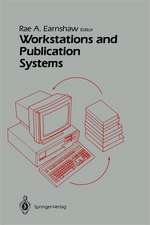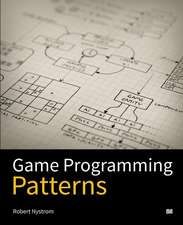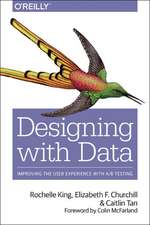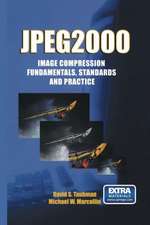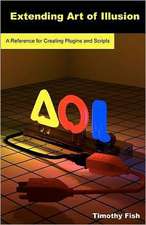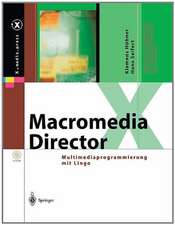Computer Graphics Techniques: Theory and Practice
Editat de David F. Rogers, Rae Earnshawen Limba Engleză Hardback – 30 oct 2001
| Toate formatele și edițiile | Preț | Express |
|---|---|---|
| Paperback (1) | 657.99 lei 6-8 săpt. | |
| Springer – 22 dec 2011 | 657.99 lei 6-8 săpt. | |
| Hardback (1) | 670.70 lei 6-8 săpt. | |
| Springer – 30 oct 2001 | 670.70 lei 6-8 săpt. |
Preț: 670.70 lei
Preț vechi: 838.37 lei
-20% Nou
Puncte Express: 1006
Preț estimativ în valută:
128.35€ • 139.37$ • 107.82£
128.35€ • 139.37$ • 107.82£
Carte tipărită la comandă
Livrare economică 22 aprilie-06 mai
Preluare comenzi: 021 569.72.76
Specificații
ISBN-13: 9780387972374
ISBN-10: 0387972374
Pagini: 542
Ilustrații: VI, 542 p.
Dimensiuni: 155 x 235 x 38 mm
Greutate: 1.11 kg
Ediția:1990
Editura: Springer
Colecția Springer
Locul publicării:New York, NY, United States
ISBN-10: 0387972374
Pagini: 542
Ilustrații: VI, 542 p.
Dimensiuni: 155 x 235 x 38 mm
Greutate: 1.11 kg
Ediția:1990
Editura: Springer
Colecția Springer
Locul publicării:New York, NY, United States
Public țintă
ResearchDescriere
In the third paper in this chapter, Mike Pratt provides an historical intro duction to solid modeling. He presents the development of the three most freqently used techniques: cellular subdivision, constructive solid modeling and boundary representation. Although each of these techniques devel oped more or less independently, today the designer's needs dictate that a successful system allows access to all of these methods. For example, sculptured surfaces are generally represented using a boundary represen tation. However, the design of a complex vehicle generally dictates that a sculptured surface representation is most efficient for the 'skin' while constructive solid geometry representation is most efficent for the inter nal mechanism. Pratt also discusses the emerging concept of design by 'feature line'. Finally, he addresses the very important problem of data exchange between solid modeling systems and the progress that is being made towards developing an international standard. With the advent of reasonably low cost scientific workstations with rea sonable to outstanding graphics capabilities, scientists and engineers are increasingly turning to computer analysis for answers to fundamental ques tions and to computer graphics for present~tion of those answers. Although the current crop of workstations exhibit quite impressive computational ca pability, they are still not capable of solving many problems in a reasonable time frame, e. g. , executing computational fluid dynamics and finite element codes or generating complex ray traced or radiosity based images. In the sixth chapter Mike Muuss of the U. S.
Cuprins
1 Algorithms for Graphics.- Attribute Considerations in Raster Graphics.- 2 Color in Computer Graphics.- Image Synthesis and Color Vision.- Color Printing for Computer Graphics.- 3 Realistic Image Generation.- Antialiasing.- Texture.- Algorithms for Realistic Image Generation.- 4 Animation.- 3D Animation and 3D Soft Objects.- 5 Modeling and CADCAM.- Sculptured Surface Definitions-A Historical Survey.- Interrogation Techniques for Parametric Surfaces.- Solid Modelling-Survey and Current Research Issues.- 6 Graphics and Networking.- Workstations, Networking, Distributed Graphics and Parallel Processing.- 7 Graphics Standards-Looking to the Future.- Standardization in Computer Graphics.- Biographies.

